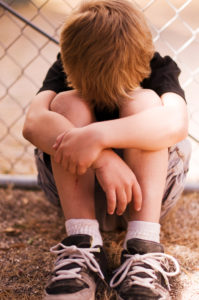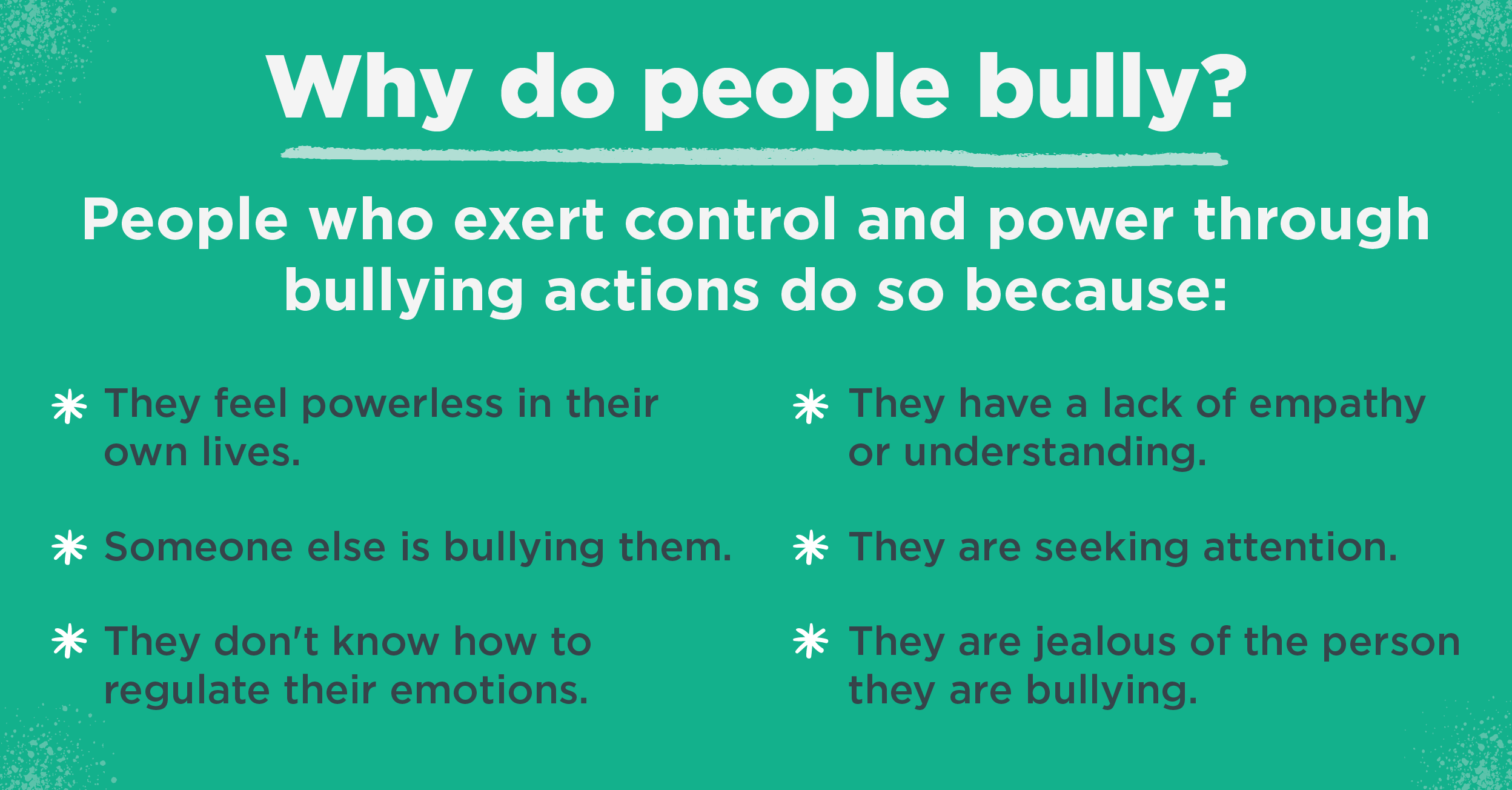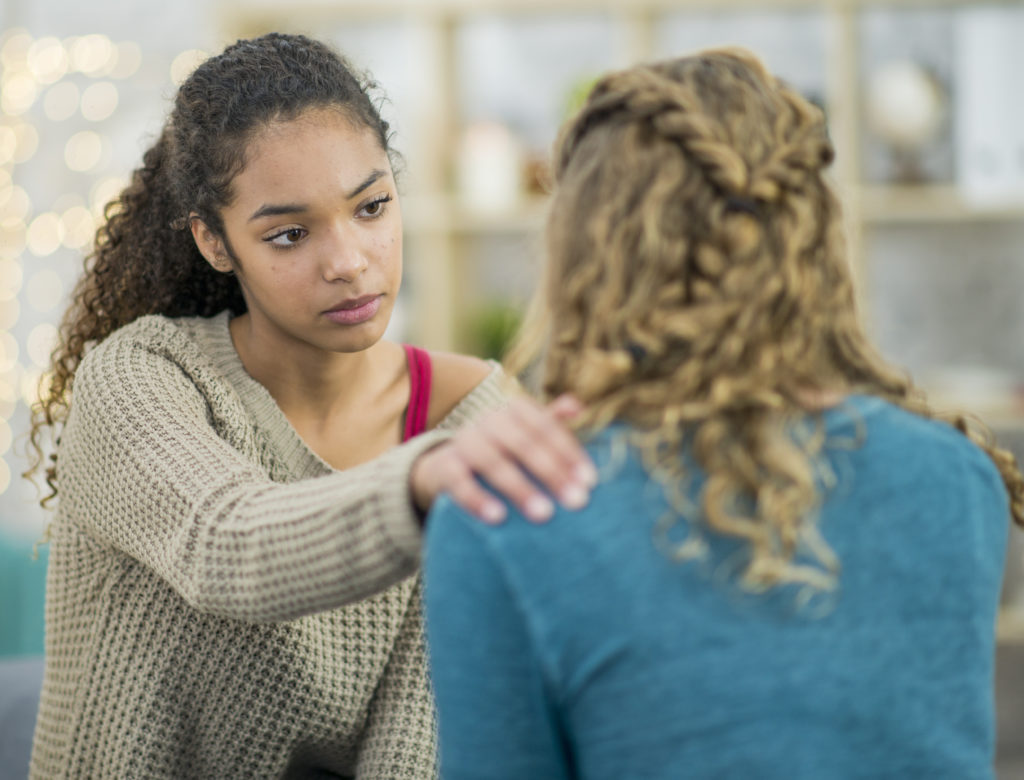How to Prevent Bullying & The Importance of Peer Intervention

October is National Bullying Prevention Month and we want to help educate communities, schools, organizations, and families about bullying and how peer and adult intervention is crucial in discouraging those behaviors.
Think back to when you were in school and try to remember a time you were teased or made fun of for something you couldn’t control. How did you feel? How did you react to the situation? One out of every five students ages 12 to 18 report being bullied but it can be very difficult for a child or teen to understand why and how to reach out for help.
The more we understand why and how people bully, the more we can each do to help stop and prevent bullying in our communities.
What is bullying and in what ways do people bully?
According to Pacer’s National Bullying Prevention Center, bullying is defined as intentional behavior that hurts, harms, or humiliates someone, either physically or emotionally. Bullying can occur while at school, in the community or online.
Here are some of the most common types of bullying:
- Verbal harassment: The most frequently reported type of bullying which involves using abusive words and name-calling to belittle, shame and hurt someone. We have all heard the popular phrase, “Sticks and stones may break my bones, but words will never hurt me.” However, research shows that words do in fact hurt us and cause emotional harm.
- Social harassment: The second most prevalent type of bullying which includes gossiping and spreading rumors, excluding someone from a social group, etc.
- Sexual bullying: This is repeated, harmful, and humiliating words and actions that target a person sexually. This may occur as name-calling, inappropriate touching or vulgar gestures. While girls and young women are the most common targets, all genders can be targets of sexual bullying.
- Cyberbullying: From 2007 to 2019, the rate of cyberbullying reported nearly doubled. Cyberbullies use technology such as social media, text messages, emails, photos, videos, etc. to embarrass, attack, threaten or harass another person and only half of cyberbullying targets know the identity of their online perpetrator. Cyberbullying often exists alongside negative in-person interactions, with 90 percent of youth reporting also experiencing verbal, social or physical bullying.
Effects of Bullying
Both bullies and targets of bullying are at a greater risk for mental and behavioral health issues, including anxiety, depression, substance abuse, sleep difficulties, lower academic achievement and dropping out of school.
Words hurt and we’re all seeing the impact of that as bullies and those they bully are twice as likely to self-harm and experience suicidal behavior.
Students who have been bullied also report that it negatively affects how they feel about themselves, their relationships with their friends and family, schoolwork and their physical health. For example, students who are bullied are more than twice as likely to report feeling bad or sick, even if there is no obvious physical explanation. Headaches, stomachaches, backaches, and neck or shoulder pain were the most commonly reported symptoms. Mental and behavioral health are tightly linked to physical health and when one is negatively affected, it impacts the other.
The Importance of Peer Intervention in Bullying Prevention
People who experience bullying report that supportive actions are the most helpful things a peer can do—talking, spending time together, or helping them get away from a bad situation.
It’s important for adults to teach and inspire children to intervene when they see bullying happening. Showing children how to intervene and reassuring their belief that bullying is morally wrong is critical when encouraging children to defend against a bully.
Teaching children about self-advocacy also allows them to gain resilience and confidence to move through life’s obstacles. When children believe in their own ability to solve problems, they better understand when a problem needs adult help.
We all have a responsibility to prevent bullying. One thing we can each easily start doing as soon as today is teaching youth how to better understand people’s differences and to practice kindness, acceptance, tolerance and inclusion.
If you’re concerned your child is being bullied or might be bullying others, there are several places you can turn to if you need additional help managing the situation. This free download, Quick Assessment: Does My Child or Teen Need Professional Help?, will provide you with 10 questions that will help you decide if your child would benefit from counseling or therapy.



